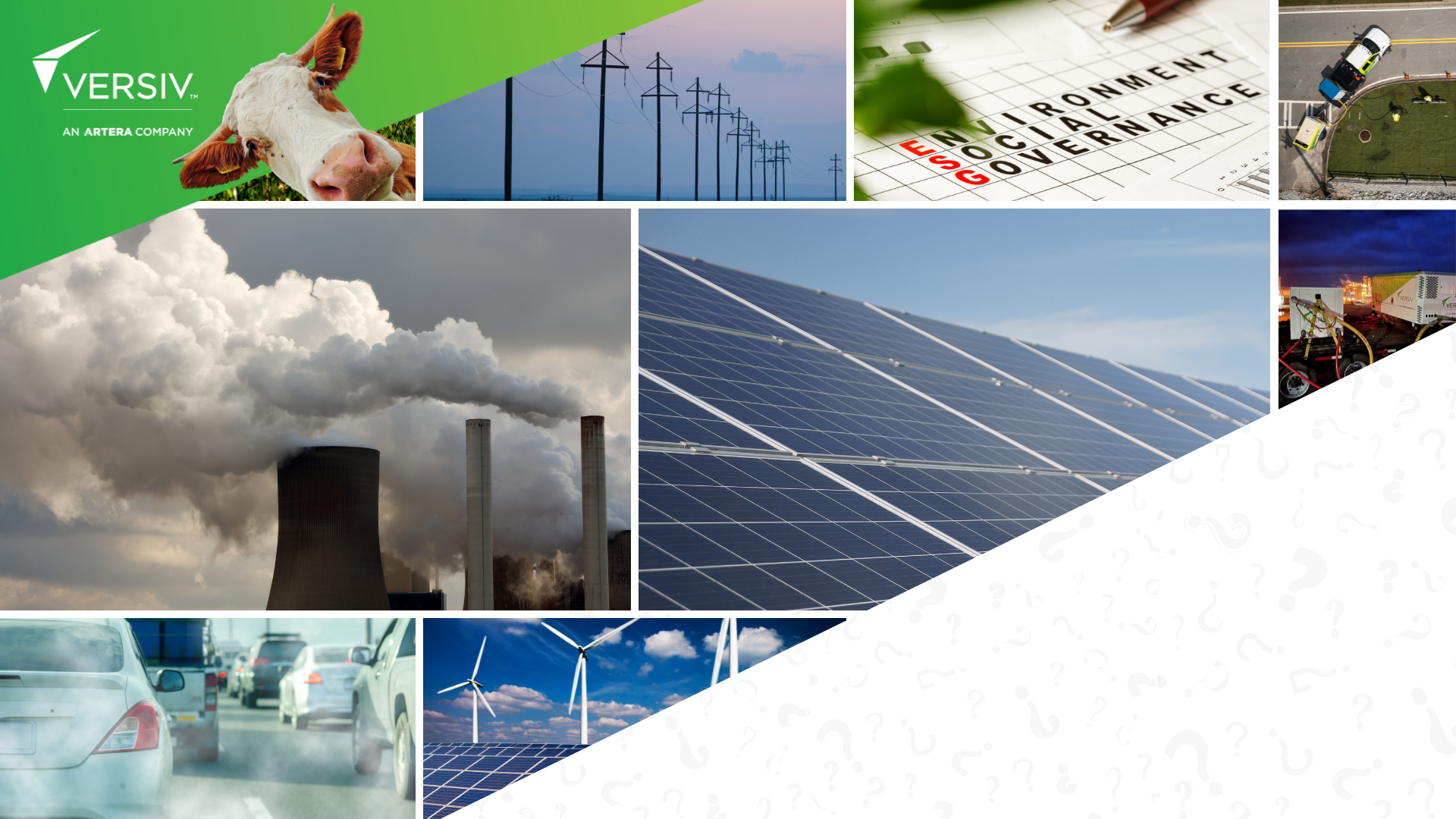At Versiv, we’re committed to helping the natural gas industry to be more sustainable and a large part of that is education.
In our popular “Did You Know?” series launched on social media last year, we gather facts and figures from reputable sources to share knowledge with our followers about emissions reduction, methane emissions, and the natural gas industry’s impact as a whole.
Here is a round up of some of the most popular posts:
Did you know methane has a higher greenhouse gas (GHG) effect than carbon dioxide? The Environmental Protection Agency (EPA) says methane has a global warming potential of 28-36 over 100 years, despite a shorter lifespan in the atmosphere. This means the benefits of reducing methane emissions, like with Versiv’s cross compression solution, can have a positive effect to mitigate climate change in the near term. See the post here.
Did you know natural gas is used by electric utilities to generate over 40% of the nation’s electricity? Natural gas is an integral part of our clean energy future. Did you know in 2020, natural gas was used by electric utilities to generate over 40% of the nation’s electricity, but it’s also a critical component in creating green materials such as light weight cars, wind power blades, and solar panels. See the post here.
Did you know greenhouse gas emissions are divided into two categories: direct emissions (Scope 1) and indirect emissions (Scope 2)? Direct emissions most often occur during pipeline operations. Indirect emissions result from common activities like driving cars, using electricity for stoves and appliances, and heating and cooling homes. Versiv partners with energy industry leaders to reduce direct emissions throughout their operations. See the post here.
Did you know gas flaring and venting are regarded as some of the largest sources of GHG emissions? Gas flaring and venting are 100% preventable (not including emergency situations) by using cross-compression technology. The cross-compression process recaptures methane, eliminating the need to release it during pipeline operations. See the post here.
Did you know natural gas plays a critical role in ensuring food security for billions of people around the world? Natural gas accounts for 70% of global ammonia production, the key ingredient in nitrogen-based fertilizers. The Haber-Bosch process, which involves reacting natural gas with nitrogen from the air to create ammonia was first used on an industrial scale in 1913 and is still widely used today. Once ammonia is produced, it can be further processed to create various nitrogen-based fertilizers, such as urea, ammonium nitrate, and ammonium sulfate. These fertilizers are estimated to support nearly half of the world’s population! See the post here.
Did you know emissions from natural gas has declined 69% since 1990? The natural gas industry has been making significant progress in reducing emissions for over 20 years. See the original post here and visit the AGA playbook for similar stats.
Specifically on gas distribution systems (like the kind that serve neighborhoods and businesses), upgrading infrastructure has led to a 73% emissions reduction since 1990. These infrastructure upgrades typically require pipeline isolation, this ensures a safe working environment and allows the upgrade work to take place. Combining cross compression with line isolation and upgrade activity reduces the need for voluntary venting and further reduces methane emissions. See the post here.
Did you know venting natural gas often leads to fears of gas leaks and unnecessary 911 calls, potentially distracting emergency responders from higher priority situations? By reducing or eliminating the need for venting with cross compression, essential utility maintenance and repairs can take place with minimal community impact. See the post here.
Did you know many utility providers participate in voluntary sustainability reporting that goes beyond regulatory requirements? These programs include U.S. EPA’s voluntary Methane Challenge program, ONE Future, and the EEI-AGA Environmental, Social, Governance (ESG) Sustainability Reporting Template – just to name a few. See the post here.
Did you know there are two types of intentional gas venting activities: planned and unplanned events? While unplanned events typically have urgent timelines for returning service, planned events provide the greatest opportunity to reduce methane emissions by avoiding a blowdown. When equipment outages are planned, such as pipe replacement or retirement, emission-less abandonment can be built into the project plan. See the post here.
Did you know even smaller cross compression projects can have a big impact? Methane saved from small pipeline maintenance projects can eventually add up to huge numbers. When it comes to emission reduction and net-zero commitments, every project counts. See the post here.
We’re proud partners in the natural gas industry of helping our customers reduce emissions and meet their sustainability goals. Is there a topic you’d like to learn more about? Let us know!

